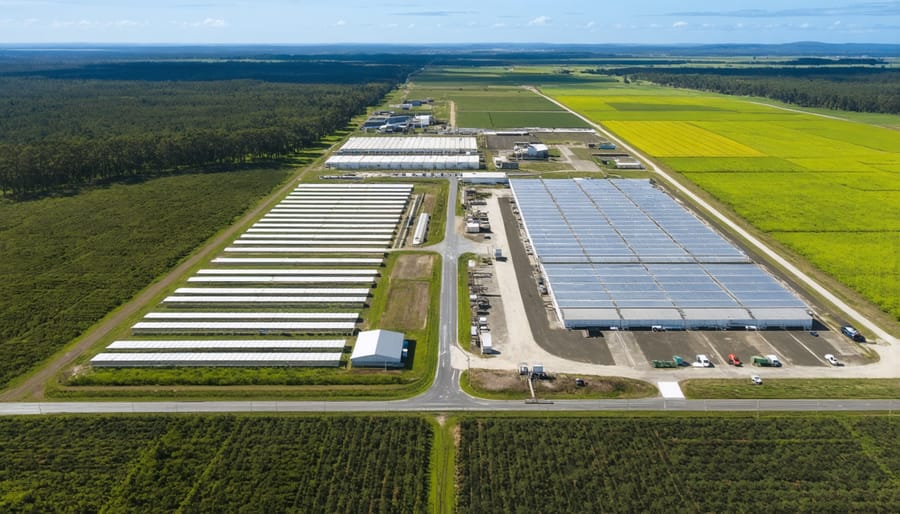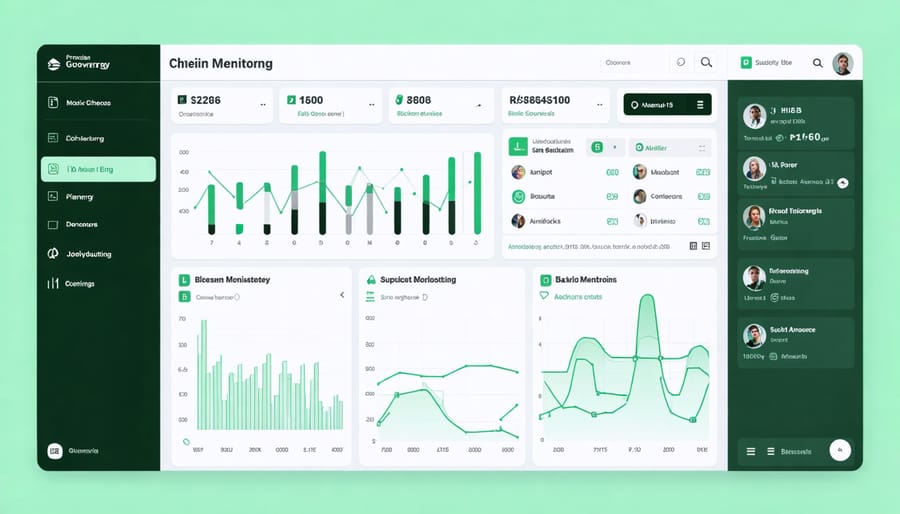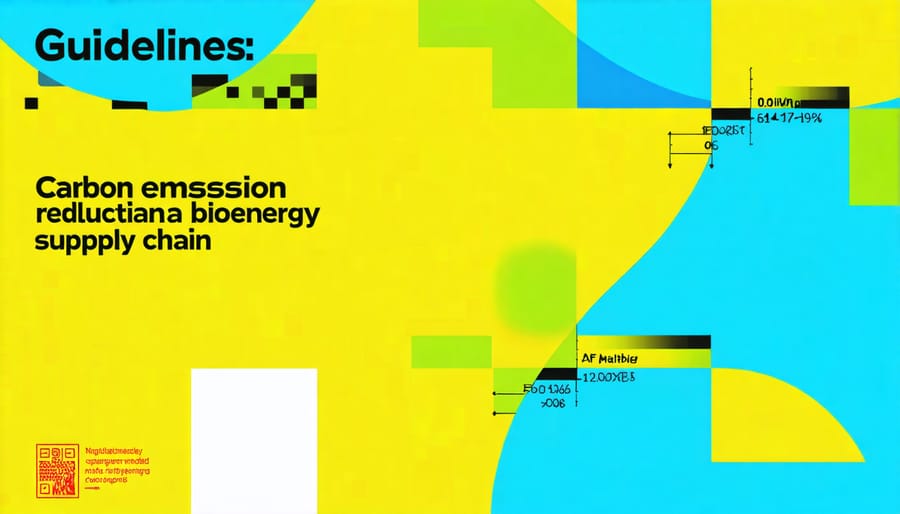The Journal of Bioengineering stands at the forefront of revolutionary medical and technological breakthroughs, where biology meets engineering to reshape our understanding of human health and environmental sustainability. As we witness unprecedented advances in synthetic biology, tissue engineering, and biomaterials, this publication serves as a crucial bridge between laboratory innovations and real-world applications. The convergence of biological systems with engineering principles has created groundbreaking solutions, from biodegradable implants to gene-editing technologies, demonstrating the importance of bioenergy and cellular engineering in modern medicine.
This peer-reviewed journal catalyzes collaboration between scientists, engineers, and medical professionals, fostering an ecosystem where innovative ideas transform into practical solutions for global health challenges. By combining rigorous scientific methodology with cutting-edge engineering approaches, researchers are unlocking new possibilities in regenerative medicine, drug delivery systems, and sustainable biotechnology. The journal’s impact extends beyond academic circles, influencing healthcare policies, industrial practices, and environmental conservation efforts worldwide.
The rapid evolution of bioengineering technologies, from CRISPR gene editing to 3D-printed organs, underscores the field’s potential to revolutionize personalized medicine and environmental sustainability. Through carefully curated research papers, reviews, and case studies, the journal illuminates pathways toward solving some of humanity’s most pressing challenges in healthcare and ecological preservation.
Current State of Australia’s Bioenergy Supply Chain
Regional Biomass Resources
Australia’s diverse landscapes offer a rich tapestry of biomass resources, each region contributing uniquely to the nation’s bioenergy potential. The northern tropical regions, including Queensland and the Northern Territory, boast abundant sugarcane residues and agricultural waste, providing year-round biomass supply opportunities. These areas contribute significantly to Australia’s total biomass resources, with sugarcane bagasse being a primary feedstock for existing bioenergy facilities.
In the southern regions, particularly Victoria and South Australia, agricultural residues from wheat and other grain crops present substantial biomass potential. The wheat belt generates millions of tonnes of straw annually, though careful consideration is given to soil health when harvesting these resources. Western Australia’s vast forestry plantations offer woody biomass opportunities, while Tasmania’s well-established forestry industry provides reliable access to wood waste and residues.
Urban centers across all regions contribute significant quantities of municipal organic waste and food processing residues, creating opportunities for waste-to-energy projects. Coastal areas are increasingly exploring seaweed cultivation as an emerging biomass resource, adding another dimension to Australia’s diverse bioenergy landscape.

Supply Chain Components
The bioengineering supply chain comprises three critical components that work together seamlessly to maximize resource efficiency. At the collection stage, biomass materials are gathered from various sources, including agricultural residues, forest waste, and municipal organic waste. This process involves careful coordination between farmers, waste management facilities, and waste-to-energy infrastructure operators to ensure a steady supply of raw materials.
Processing facilities transform these materials into usable bioenergy products through various methods such as anaerobic digestion, gasification, or direct combustion. These facilities employ advanced sorting technologies and quality control measures to maintain consistent output standards. Many Australian processing centers have implemented innovative automation systems to enhance efficiency and reduce operational costs.
The distribution network connects processing facilities with end-users through a sophisticated logistics system. This includes specialized storage facilities, transportation networks, and delivery mechanisms designed to maintain product integrity. Smart monitoring systems track inventory levels and energy demand patterns, allowing for just-in-time delivery and optimal resource allocation. The integration of these components creates a robust supply chain that supports Australia’s growing bioenergy sector while minimizing environmental impact.
Advanced Optimization Techniques
Digital Integration Solutions
The integration of digital technologies has revolutionized how bioengineering supply chains operate in Australia, creating more efficient and sustainable systems. Smart sensors and Internet of Things (IoT) devices now monitor every aspect of biomass production and processing, providing real-time data that enables quick decision-making and optimal resource allocation.
Leading Australian facilities have implemented cloud-based management systems that track biomass from source to final product. These platforms integrate with artificial intelligence algorithms to predict maintenance needs, optimize storage conditions, and reduce waste throughout the supply chain. For instance, the Western Sydney Bioenergy Hub uses advanced analytics to coordinate deliveries and processing schedules, resulting in a 30% improvement in operational efficiency.
Digital twins have emerged as powerful tools for supply chain visualization and optimization. These virtual replicas of physical operations allow managers to simulate different scenarios and identify potential bottlenecks before they occur. The technology has proven particularly valuable in regional areas, where coordinating multiple biomass sources and transport logistics can be challenging.
Blockchain technology is also making its mark, ensuring transparency and traceability in the bioenergy supply chain. This has been particularly important for maintaining quality standards and building trust with stakeholders. Several facilities in Victoria and New South Wales have implemented blockchain systems to track their sustainable sourcing practices and verify environmental compliance.
Mobile applications now connect various stakeholders in the supply chain, from farmers supplying biomass to end-users monitoring their energy consumption. These user-friendly interfaces have democratized access to supply chain data, fostering better collaboration and more informed decision-making across the industry.

Logistics Enhancement Strategies
The evolution of bioengineering logistics has revolutionized how we handle sensitive biological materials across Australia’s vast distances. Recent innovations in temperature-controlled transportation have significantly improved the viability of cellular materials during transit, with smart containers now maintaining precise conditions within 0.5°C of target temperatures.
Storage solutions have similarly advanced, with new cryogenic preservation techniques extending the shelf life of biological samples by up to 40%. Australian research facilities have pioneered the implementation of IoT-enabled monitoring systems that provide real-time tracking of environmental conditions, reducing sample loss by nearly 65% compared to traditional methods.
A notable breakthrough has been the development of phase-change materials specifically designed for biological transport. These materials, created through collaboration between Melbourne and Sydney universities, maintain stable temperatures for up to 72 hours without external power sources – a game-changer for remote area deliveries.
The integration of blockchain technology has enhanced supply chain transparency, allowing researchers to track samples from collection to delivery with unprecedented accuracy. This system has proven particularly valuable in maintaining chain of custody for clinical trials and sensitive research materials.
Looking ahead, emerging innovations include self-regulating storage units that automatically adjust conditions based on sample requirements, and eco-friendly packaging solutions that reduce environmental impact while maintaining protection standards. These developments are particularly relevant for Australia’s biotech sector, which often requires long-distance transportation across challenging climate zones.
The implementation of these enhanced logistics strategies has resulted in a 30% reduction in transport-related sample degradation and a 25% decrease in operating costs, making advanced bioengineering more accessible across the continent.
Environmental and Economic Impact

Carbon Footprint Reduction
Through innovative bioengineering approaches to supply chain optimization, Australian companies have achieved remarkable reductions in their carbon footprints. Recent studies show that optimized bioenergy supply chains can reduce greenhouse gas emissions by up to 45% compared to traditional energy systems.
A standout example is the Murray-Darling Basin initiative, where streamlined biomass collection and processing resulted in a 12,000-tonne reduction in annual CO2 emissions. This success story demonstrates how smart logistics and efficient resource utilization can deliver significant environmental benefits while maintaining operational effectiveness.
The implementation of real-time monitoring systems and AI-driven route optimization has helped reduce transportation emissions by an additional 30%. Companies are now able to track and minimize their environmental impact through sophisticated carbon accounting methods, leading to more sustainable operations across the entire supply chain.
Local agricultural waste processing facilities have reported substantial improvements in their environmental performance. By optimizing collection routes and processing schedules, these facilities have decreased their fuel consumption by 25% and reduced waste by 35%. These improvements translate to approximately 8,000 tonnes of CO2 equivalent savings annually.
The ripple effect extends beyond direct emissions reductions. Optimized supply chains have led to decreased water usage, reduced soil degradation, and improved biodiversity protection in agricultural areas. These comprehensive environmental benefits showcase how thoughtful supply chain management can contribute to Australia’s broader sustainability goals.
Regional Economic Growth
Bioengineering initiatives are driving remarkable rural economic development across Australia’s regional communities. Local biomass processing facilities are creating sustainable job opportunities, with each facility typically employing 15-30 skilled workers from the surrounding area. These positions range from plant operators and maintenance technicians to logistics coordinators and quality control specialists.
The ripple effect extends well beyond direct employment. Farmers are discovering new revenue streams by supplying agricultural waste to bioprocessing facilities, while local transport companies benefit from increased logistics demands. Small businesses in these communities are experiencing growth as the workforce expands and economic activity intensifies.
In regions like the Riverina and Central Queensland, bioengineering projects have sparked the development of specialized training programs at local TAFEs, preparing the next generation of workers for careers in this emerging industry. These educational initiatives are helping to retain young talent in rural areas while attracting skilled professionals from urban centers.
The establishment of bioengineering facilities has also led to infrastructure improvements, including road upgrades and enhanced power distribution networks, which benefit entire communities. Local councils report increased business confidence and investment in associated industries, creating a sustainable cycle of growth and innovation in previously struggling regional areas.
Future Development Pathways
Emerging Technologies
The landscape of bioengineering is rapidly evolving with groundbreaking technologies that promise to revolutionize sustainable energy production. Advanced artificial intelligence and machine learning algorithms are now being deployed to optimize feedstock selection and processing, while new sensor technologies enable real-time monitoring of biomass quality. These developments are particularly exciting for Australia’s bioenergy innovation sector, where smart integration systems are making production more efficient than ever before.
Cutting-edge genetic engineering techniques are enhancing biomass crops, creating varieties that offer higher yields and better resistance to environmental stresses. Nano-biotechnology is opening new frontiers in biomass conversion, with specialized catalysts improving process efficiency while reducing energy requirements. These advances are complemented by blockchain technology, which is revolutionizing supply chain transparency and traceability.
Perhaps most promising is the development of hybrid systems that combine multiple renewable energy sources with bioenergy, creating more reliable and sustainable power solutions. These integrated approaches, coupled with advanced storage technologies, are paving the way for a more resilient and environmentally friendly energy future.
Policy Support Framework
To support the continued growth of bioengineering research and development in Australia, a robust policy framework is essential. Recent initiatives have shown that successful policy implementation requires a three-pronged approach: research funding allocation, industry partnerships, and regulatory streamlining.
The Australian Research Council has established dedicated funding streams for bioengineering projects, particularly those focusing on sustainable solutions. This commitment needs to be strengthened through long-term funding guarantees and expanded grant opportunities for emerging researchers and institutions.
Industry collaboration policies have proven particularly effective, with successful programs like the Bioengineering Innovation Hub demonstrating the power of public-private partnerships. These frameworks should be enhanced to include tax incentives for companies investing in bioengineering research and development.
Regulatory reforms are equally crucial, with streamlined approval processes needed for bioengineering innovations while maintaining rigorous safety standards. The implementation of a “fast-track” assessment pathway for promising developments has already shown positive results in medical bioengineering applications.
Looking forward, policy frameworks must remain adaptable to accommodate rapid technological advancement while ensuring ethical considerations and public safety remain paramount. This balanced approach will help position Australia as a global leader in bioengineering innovation.
The Journal of Bioengineering continues to be a pivotal platform for advancing our understanding of sustainable technologies and their practical applications in Australia and beyond. Through its comprehensive coverage of cutting-edge research and innovations, the journal has established itself as an invaluable resource for scientists, industry professionals, and policymakers alike.
Looking ahead, the future of bioengineering in Australia appears particularly promising. The journal’s focus on renewable energy solutions and sustainable practices aligns perfectly with our nation’s commitment to reducing carbon emissions and building a more environmentally conscious future. Success stories featured in recent issues demonstrate how theoretical research is being effectively translated into real-world applications, from improved biofuel production methods to innovative waste management systems.
The journal’s emphasis on practical, scalable solutions has already contributed to significant advancements in the field. These developments are particularly relevant as Australia continues to position itself as a leader in sustainable technology and renewable energy innovation. The growing collaboration between academic researchers and industry partners, frequently highlighted in the journal, suggests a bright future for bioengineering applications.
As we move forward, the Journal of Bioengineering will undoubtedly play an increasingly important role in shaping the future of sustainable technology. Its commitment to publishing high-quality research while maintaining accessibility for a diverse readership ensures that crucial innovations reach those who can implement them effectively. With continued focus on practical applications and real-world impact, the journal stands ready to support Australia’s transition to a more sustainable future, one breakthrough at a time.

